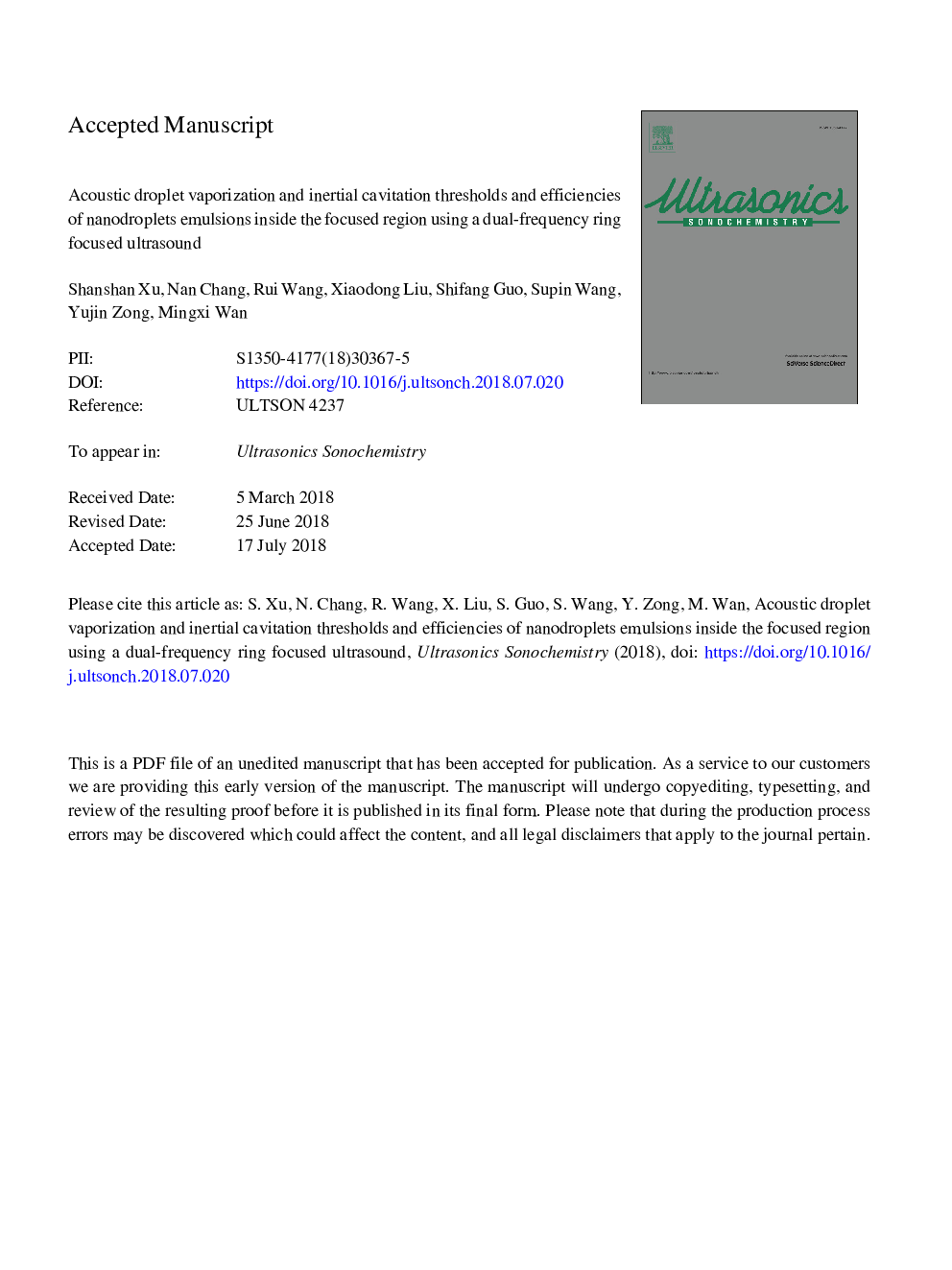| Article ID | Journal | Published Year | Pages | File Type |
|---|---|---|---|---|
| 7702305 | Ultrasonics Sonochemistry | 2018 | 25 Pages |
Abstract
In this work, in order to develop a low-acoustic-intensity, high-efficiency and precise-treatment strategy, the vaporization of droplets and the inertial cavitation of vaporized microbubbles, using a dual-frequency focused ultrasound transducer, were investigated. The effect of a low frequency (LF), 1.1-MHz, sonication on droplet vaporization and the following inertial cavitation by the introduction of a high frequency (HF), 5-MHz, sonication was studied. It is shown that acoustic droplet vaporization (ADV) threshold is the lowest at dual-frequency sonication (LF of 18.9â¯W/cm2 and HF of 4.1â¯W/cm2); moreover, the ADV efficiency is the highest at intensity threshold. The ADV area can be minimized to 2â¯mm2 using a dual-frequency sonication (LF of 38.1â¯W/cm2 and HF of 8.5â¯W/cm2). The IC area and efficiency can also be modulated using a dual-frequency sonication. Consequently, it can be concluded that in contrast to the single-frequency sonication, using the dual-frequency ultrasound, the vaporization of nanodroplets and the following inertial cavitation of the vaporized microbubbles can be modulated. Besides, a dual-frequency can result in the minimum ADV/IC area, lowest ADV/IC threshold, and highest ADV/IC efficiency.
Related Topics
Physical Sciences and Engineering
Chemistry
Chemistry (General)
Authors
Shanshan Xu, Nan Chang, Rui Wang, Xiaodong Liu, Shifang Guo, Supin Wang, Yujin Zong, Mingxi Wan,
